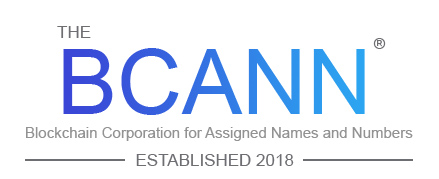
Polkadot is an open-source sharded multichain protocol that connects and secures a network of specialized blockchains, facilitating cross-chain transfer of any data or asset types, not just tokens, thereby allowing blockchains to be interoperable with each other. Polkadot was designed to provide a foundation for a decentralized internet of blockchains, also known as Web3.
Polkadot is known as a layer-0 metaprotocol because it underlies and describes a format for a network of layer 1 blockchains known as parachains (parallel chains). As a metaprotocol, Polkadot is also capable of autonomously and forklessly updating its own codebase via on-chain governance according to the will of its token holder community.
Polkadot provides a foundation to support a decentralized web, controlled by its users, and to simplify the creation of new applications, institutions and services.
The Polkadot protocol can connect public and private chains, permissionless networks, oracles and future technologies, allowing these independent blockchains to trustlessly share information and transactions through the Polkadot Relay Chain (explained further down).
Polkadot’s native DOT token serves three clear purposes: staking for operations and security, facilitating network governance, and bonding tokens to connect parachains .
Polkadot has four core components:
Relay Chain: Polkadot’s “heart,” helping to create consensus, interoperability and shared security across the network of different chains;
Parachains: independent chains that can have their own tokens and be optimized for specific use cases;
Parathreads: similar to parachains but with flexible connectivity based on an economical pay-as-you-go model;
Bridges: allow parachains and parathreads to connect and communicate with external blockchains like Ethereum.
Who Are the Founders of Polkadot?
Polkadot is the flagship protocol of Web3 Foundation, a Swiss Foundation with a mission to facilitate an open-source, fully functional and user-friendly decentralized web.
Polkadot’s founders are Dr. Gavin Wood, Robert Habermeier and Peter Czaban.
Wood, Web3 Foundation’s president, is the most well-known of the trio thanks to his industry influence as Ethereum co-founder, Parity Technologies founder and the creator of the smart contract coding language Solidity. Wood is also credited with coining the term Web3.
Habermeier is a Thiel Fellow and accomplished blockchain and cryptography researcher and developer. Czaban is the former Technology Director at Web3 Foundation, with a wealth of experience across highly specialized fintech industries.
What Makes Polkadot Unique?
Polkadot is a sharded multichain network, meaning it can process many transactions on several chains in parallel (“parachains”). This parallel processing power improves scalability.
Custom blockchains are quick and easy to develop using the Substrate framework and Substrate blockchains are designed to be easy to connect to Polkadot's network. The network is also highly flexible and adaptive, allowing the sharing of information and functionality between participants. Polkadot can be automatically upgraded without the need for a fork in order to implement new features or remove bugs.
The network has a highly sophisticated user-driven governance system where all token holders have a vote in how the network is run. Teams can customize their own blockchain’s governance on Polkadot based on their needs and evolving conditions. Nominators, validators, and collators all fulfil various duties to help secure and maintain the network and eradicate bad behavior.
At the end of 2021, Polkadot successfully concluded its first Parachain auctions. The Parachain auctions followed an un-permissioned candle auction system. The winning bid is the highest bid at the random moment the auction ends.
Polkadot assigned the first five slots to the following auction winners: Acala, Moonbeam, Astar, Parallel and Clover. These projects will have their parachain slots locked in for 96 weeks, guaranteed by the DOT bidders committed as collateral. As customary on Polkadot, all projects had previously been battle-tested on its de-facto testnet Kusama.
Polkadot's New On-Chain Governance Model
Announced in June 2022, the protocol is set to overhaul the existing framework so that the network will become more entrenched in the decentralization ethos. The team argued that the current governance system has elements of centralization. For example, the Polkadot Council, a body of executives, had sole control over some decision-making processes, including how the network's treasury is spent.
To this end, the new development is replacing the existing governance infrastructure with a framework in the form of a "referendum." In other words, the planned upgrade will introduce a voting system allowing anyone to submit proposals and have them approved.
Called Governorship version 2 or Gov2, this upgrade allegedly eliminates all forms of preferential first-class citizenry like the Technical Committee and the Polkadot Council.
With this, the protocol aims to reduce the concentration of voting power by replacing the Technical Committee with the Polkadot Fellowship, designed to accommodate up to tens of thousands of members and feature a lower barrier for entry. The members are ranked to showcase the degree the protocol expects each participant to make informed decisions and support proposals that are in the best interest of the network.
Another core component of the upgrade is the Origins and Tracks system. This mechanism will help grade the importance of a proposal and determine the appropriate way to treat them. As such, the network can implement suitable safeguards to ensure that the decision-making process is decentralized and fair. For instance, proposals tagged as Root Origins are the most sensitive. Such proposals undergo longer and more scrutinized consideration periods, with a higher approval threshold. Also, the system ensures that only one hypersensitive proposal can be deliberated on at a time.
On the other hand, proposals with less sensitive Origins have shorter consideration periods with a lower approval threshold. Put simply, the grade of the importance of proposals will determine the type of safeguards assigned to them and the length of the decision-making process they undergo.
Gov2 will first be tested on Kusama, an experimental development environment for testing applications, before it goes live on Polkadot. Once the testing and audit phase is complete, the team will submit the proposal to launch Gov2 on the Polkadot network.
Related Pages:
Learn more about Cosmos (ATOM).
Learn more about Ethereum (ETH).
Learn more about Cardano (ADA)..
Curious about the crypto space? Read our educational section — Alexandria.
Want to keep track of Polkadot prices live? Download the CoinMarketCap mobile app!
Want to convert the Polkadot price today to your desired fiat currency? Check out CoinMarketCap exchange rate calculator.
To learn more about this project, check out our deep dive of Polkadot.
Learn more about Parachains and blockchain bridges from the Web3 foundation.
How Many Polkadot (DOT) Tokens Are There in Circulation?
Following the network’s redenomination after a referendum on Polkadot, DOT balances increased by 100, so one old DOT was equivalent to 100 new DOT. This meant that the initial maximum supply of 10 million old DOT in August 2020 became 1 billion new DOT tokens. The redenomination was undertaken purely to avoid the use of small decimals and make calculation easier. While all balances were increased by a factor of one hundred, this did not impact the distribution of DOT or holders’ proportional share.
Polkadot’s first initial coin offering (ICO) was held in October 2017, and the Polkadot price was $0.29, with 2.24 million tokens offered. The second ICO was held in July 2020, and the Polkadot price offered was $1.25, and 342,080 DOT tokens were sold.
How Is the Polkadot Network Secured?
The network uses an NPoS (nominated proof-of-stake) mechanism with validators and nominators.Nominators back validators with their tokens. These staked tokens maximize chain security by making it prohibitively expensive to misbehave.
Validators are staked on the Relay Chain and confirm transactions coming from the different parachains. This unique validity scheme enables chains to interact with each other securely under the same rules, yet remain independently governed.


